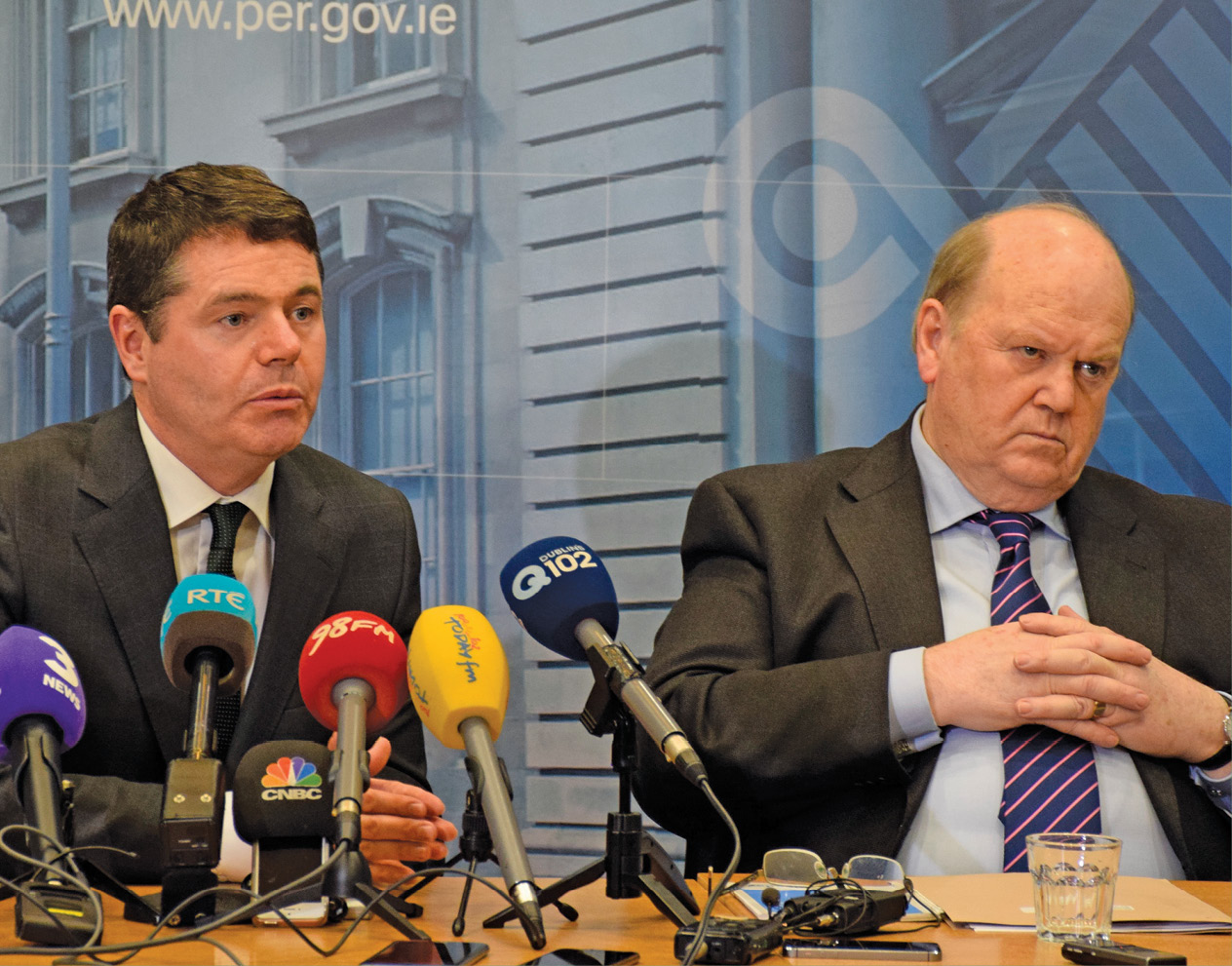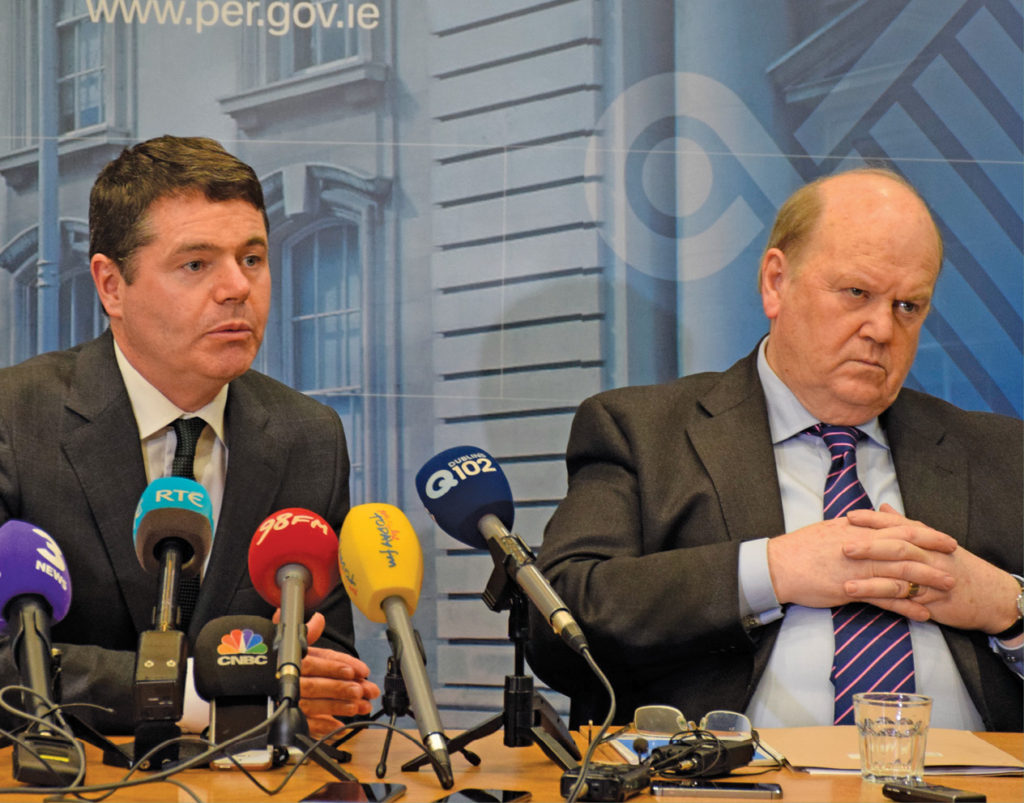Capital boost for infrastructure to 2021


The Government is re-evaluating its capital plan in line with shifts in national economic and social infrastructure priorities. eolas provides an overview.
The State finds itself facing two challenges of significant and pressing proportions: a surge population growth and Brexit. With developments in demographics comes the inevitable demand for enhanced public transport, energy, healthcare and education infrastructure. At the same time, in order to maintain and further Ireland’s economic competiveness in the face of Brexit, infrastructure will be absolutely crucial in attracting foreign investment and ensuring continued growth for domestic business.
Review
As such, Minister for Public Expenditure and Reform Paschal Donohoe has obtained Cabinet approval to reassess Ireland’s capital investment programme, Building on Recovery 2016-2021. The 2015 capital plan established a framework for Exchequer spending of €27 billion and, alongside the semi-state sector and public private partnership programmes, a state-backed total of €42 billion. The review, which will comprise a two-stage process, comes in light of the allocation of an additional €5.1 billion to the plan’s initial €42 billion.
Stage one will incorporate a review of priorities and a subsequent reallocation of the additional funding up until 2021. Priority areas for capital investment will reflect to the objectives of the plan alongside the investment priorities identified in the Programme for Government. Stage two will constitute an analysis of Ireland’s longer term planning needs and a subsequent report on the framework required to ensure that these objectives are adequately supported.
Many of the projects which were detailed in the initial 2015 plan are currently under construction. These include the first phase of construction on the new National Children’s Hospital at St James’s; the construction of 14 primary care centres across the country and the Luas Cross City which will be completed later this year, connecting the existing red and green Luas lines.
In order to ease population growth, however, there is an urgent requirement of additional investment in housing. The Government has confirmed that €2.5 billion of the additional capital funds will be distributed towards efforts aimed at alleviating the ongoing housing crisis. The Housing Action Plan aims to inject an additional 47,000 social homes by 2021 and ensure that the private housing market experiences a return to levels of activity averaging 25,000 homes per annum.
The remaining €2.6 billion is expected to be distributed across other vital infrastructure sectors, including transport, health, education, flood defence and critical internet infrastructure. With the addition of this surplus fund, the State’s contribution to capital investment will represent 4 per by the close of the decade.
“What we now have to address is, in the light of Brexit, how we can better link up pieces of infrastructure like that so that they are operating in a more integrated manner and supporting the competitive advantages Ireland will have to deliver in a more competitive world.”
Brexit
Economic competiveness will have a significant level of dependence upon the ability of Ireland’s transport infrastructure to assist the export sectors and absorb increased tourism volume. As such, capital investment must facilitate the growth and consolidation of ports and airports.
Amid the impending process of UK disengagement from the EU, the Government is set to opportunely introduce the remaining €2.6 billion into transport projects in an effort to enhance competitiveness and induce and influx of business relocation to Ireland. Likewise, Finance Minister Michael Noonan has engaged in talks with the EIB to secure additional funding.
Noonan noted: “If we live by trade, we need to increase the capacity of ports and if there are inhibitions on trading with the UK as a result of the Brexit negotiations, we’ll need to expand the ports. Our tourist industry is going very well so airports will be important.”
Similarly, Donohoe asserted: “What we now have to address is, in the light of Brexit, how we can better link up pieces of infrastructure like that so that they are operating in a more integrated manner and supporting the competitive advantages Ireland will have to deliver in a more competitive world.”
Connectivity
Aviation has reaped immense rewards for the island. Dublin Airport has experienced six consecutive years of passenger growth and last year alone, passenger numbers at Dublin Airport soared by a mammoth 11 per cent up to 27.9 million alongside the introduction of 19 new routes. Likewise, both Cork and Shannon airports also felt growth of 8 per cent and 2 per cent respectively.
Whilst reluctant to be drawn into speculation over the prioritisation of specific transport projects, Minister Donohoe did however reference to connectivity and allude to runway expansion at Dublin Airport, Metro North and the deepening of the ports at Dublin and Cork.
Conscious of disparities in growth across the country, with the east coast securing a disproportionate volume, the review of Building on recovery will align with the new National Planning Framework, Ireland 2040. The distribution of capital resources has direct implications for the Ireland which will emerge over the next quarter of a century.
Sustainability is also crucial to infrastructural planning and of the €42 billion outlined by the initial capital investment programme, over one-third has been earmarked for delivery by State bodies, including ESB, Irish Water and Ervia. In line with the Government’s National Mitigation Plan, this €14.5 billion will primarily be used to accelerate improvements in energy infrastructure, with the roll-out of smart metering and renewable energy projects taking precedence.
The Public Expenditure Minister has placed significant emphasis on the efficiency of such capital investment expenditure and stressed the importance of investment in the maintenance of existing infrastructure. In addition, he has stressed the need to ensure that any investment returns the necessary outputs.
Donohoe stated: “Over the coming months, I will be hearing the views of Government departments, of business and other groups and, crucially, of the public on how best we should add to and refine the 2015 capital plan to make it the best it can possibly be. Inevitably, the level of demands will far outweigh the resources that are available. However, I believe that collectively we will reach a consensus on how best to invest for the future, prepare ourselves for the economic challenges and opportunities that lie ahead and ensure a better quality of life for all who live here.”





